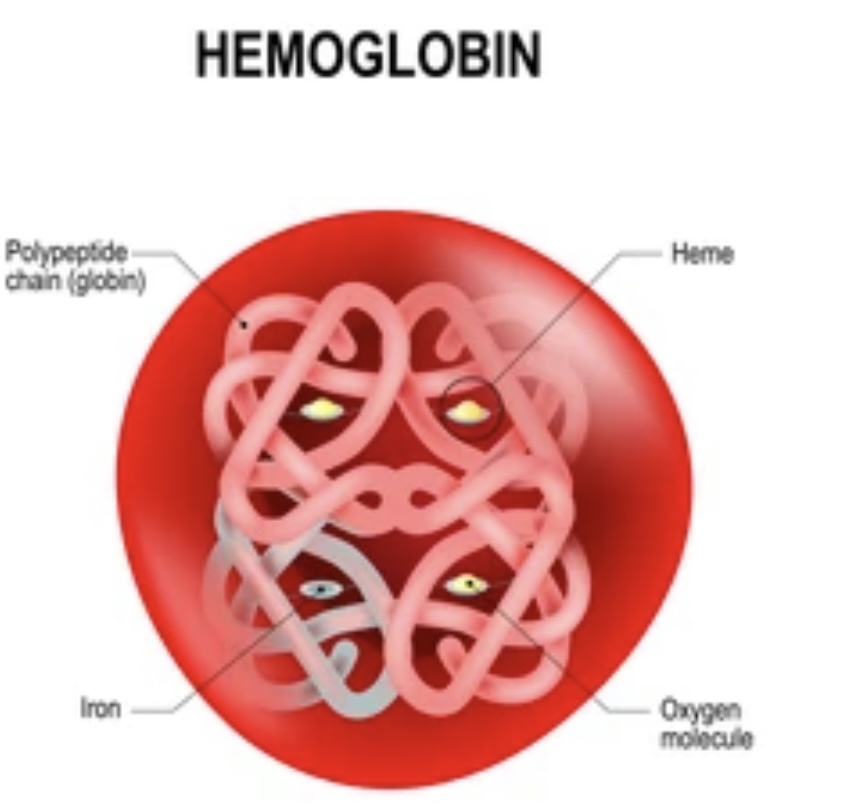INTRODUCTION

Respiration is a fundamental process in living organisms, providing oxygen for energy production and removing carbon dioxide as a waste product. To facilitate efficient oxygen transport, various animals have evolved specialized molecules called respiratory pigments. These pigments exhibit distinct structures and functions across different phylogenetic groups, enabling organisms to thrive in diverse environments. In this article, we delve into the captivating world of respiratory pigments, exploring their diversity, mechanisms of oxygen binding and release, and their evolutionary significance among different taxa.
RESPIRATORY PIGMENTS: AN OVERVIEW
Respiratory pigments are molecules that bind reversibly to oxygen, enhancing its transport within an organism’s body. These pigments are typically found within specialized cells or circulating in body fluids, such as blood or hemolymph. They come in different forms, including hemoglobin, hemocyanin, and chlorocruorin, among others, and are responsible for the characteristic coloration observed in many animals.
HEMOGLOBIN

Hemoglobin is the most common respiratory pigment among vertebrates and some invertebrates. It consists of four protein subunits, each containing a heme group that binds to oxygen. Hemoglobin molecules can transport multiple oxygen molecules simultaneously, allowing for efficient oxygen delivery to tissues. Vertebrate hemoglobin exhibits variations across different species, enabling them to adapt to varying oxygen levels in their environments.

HEMOCYANIN
Hemocyanin is a respiratory pigment found in many invertebrates, including arthropods and mollusks. Unlike hemoglobin, hemocyanin is not bound within cells but circulates freely in the hemolymph. It contains copper atoms instead of iron, giving it a blue or green coloration. Hemocyanin functions by binding oxygen directly to the copper atoms. This pigment is particularly efficient in oxygen transport at low oxygen partial pressures, making it well-suited for organisms inhabiting cold environments.
CHLOROCRUORIN
Chlorocruorin is a respiratory pigment found in some annelids, particularly polychaetes. It contains iron atoms and a green-colored protein, allowing for oxygen binding and transport. Chlorocruorin has a high affinity for oxygen, making it useful for organisms living in low-oxygen environments, such as muddy sediments or deep-sea habitats.
EVOLUTIONARY SIGNIFICANCE OF RESPIRATORY PIGMENTS
The evolution of respiratory pigments has played a crucial role in the adaptation of organisms to different environments and lifestyles. These pigments have undergone remarkable diversification and optimization to meet the oxygen demands of various organisms.
- Adaptation to Low Oxygen Environments:
Organisms inhabiting low-oxygen environments, such as high-altitude regions or deep-sea ecosystems, have developed respiratory pigments with high oxygen affinity. This adaptation allows for efficient oxygen extraction from the environment and transport to tissues. Examples include the high-affinity hemoglobin variants found in high-altitude-dwelling mammals or the specialized hemoglobin of deep-sea fish.
- Temperature Adaptation:
Respiratory pigments also exhibit adaptations to temperature variations. Some ectothermic organisms, such as reptiles and fish, have hemoglobins that display increased oxygen affinity at lower temperatures, ensuring efficient oxygen transport even in colder environments. This adaptation is essential for maintaining adequate oxygen supply during periods of reduced metabolic activity.
- Evolutionary Transitions:
The evolution of respiratory pigments has witnessed transitions between different types of pigments across phylogenetic groups. For instance, some invertebrates, like certain crustaceans, have transitioned from using hemocyanin to hemoglobin-like molecules, possibly due to the advantages conferred by higher oxygen-carrying capacity.
- Functional Convergence:
In certain cases, unrelated taxa have independently evolved similar respiratory pigments due to functional convergence. For example, the hemoglobins found in mammals, birds, and some reptiles are structurally similar and share oxygen-binding characteristics, despite arising through independent evolutionary lineages. This convergence highlights the importance of oxygen transport and the selective pressures that have shaped these adaptations.
CONCLUSION
Respiratory pigments are remarkable molecules that enable organisms to efficiently transport oxygen, facilitating respiration and energy production. The diversity of respiratory pigments across phylogenetic groups reflects the evolutionary adaptations of organisms to different environments and lifestyles. Hemoglobin, hemocyanin, and chlorocruorin represent distinct respiratory pigments with varying structures, mechanisms of oxygen binding, and evolutionary histories.
Studying respiratory pigments and their adaptations provides insights into the physiological and ecological processes governing oxygen transport in diverse organisms. Understanding the molecular and structural basis of these pigments enhances our knowledge of animal physiology, evolutionary biology, and the complex interplay between organisms and their environments.
Future research on respiratory pigments holds promise for uncovering additional insights into their evolution, functional adaptations, and potential applications in fields such as medicine and biotechnology. The study of respiratory pigments continues to unveil the remarkable diversity of life and showcases the extraordinary mechanisms organisms have evolved to survive and thrive in their respective habitats.
Discover more from ZOOLOGYTALKS
Subscribe to get the latest posts sent to your email.


Pingback: How Many Hearts Does an Octopus Have ? | ZOOLOGYTALKS | 2024